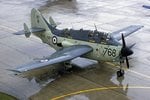1. Take supercharger off the Merlin XX in the fall of 1940
2. Send to Allison.
3. In modern terms "copy and paste"
solves an awful lot of problems in 1942, early 1943.
Make a 9.60:1 S/C drive that is strong enough (= reliable), during late 1940. Means a 370 mph P-40, 380+ mph P-39, 400+ mph P-51, all in service by time of Pearl Harbour.


